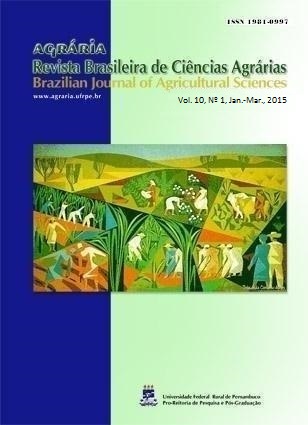Potassium phosphite and potassium silicate in the control of asian soybean rust (Pkakopsora pachyrhizi Syd. & P. Syd)
DOI:
https://doi.org/10.5039/agraria.v10i1a4771Keywords:
spore trap, induction of resistance, timing of application, synergismAbstract
The aim of this paper was to study the effect of potassium phosphite and potassium silicate, alone or in combination with fungicide, for the control of asian soybean rust. The cultivar CD 214RR was used, with 0.5 m row spacing and 15 plants per linear meter. It was used the spore trap Siga to detect the rust spores in the air before the effective infection on the plants, doing preventive applications for the products that were tested. The experimental design was in randomized block with eight treatments and four replications. The treatments were: fungicide; fungicide + potassium phosphite; fungicide + potassium silicate; fungicide + potassium phosphite + potassium silicate; potassium phosphite; potassium silicate; potassium phosphite + potassium silicate; and untreated control. The dosage of the fungicide was 0.3 L ha-1 (cyproconazol + azoxistrobin), and the dosage of phosphite and silicate of potassium was 2 L ha-1. The spore trap Siga detects spores of Phakopsora pachyrhizi in the air before the symptoms. Applications of the products were made three days after the detection of the spores. It was verified that the use of fungicide reduced the severity of the disease, the apparent infection rate of the asian soybean rust, the defoliation and productivity losses, independently of the association with potassium phosphite and/or potassium silicate. The association of potassium phosphite and potassium silicate reduced the rust severity at the end of the development of the soybean crop, in relation to the untreated control, not providing, however, reduction on the losses of productivity.
Downloads
Downloads
Published
How to Cite
Issue
Section
License

This work is licensed under a Creative Commons Attribution-NonCommercial 3.0 Unported License.


